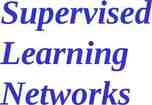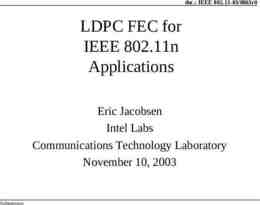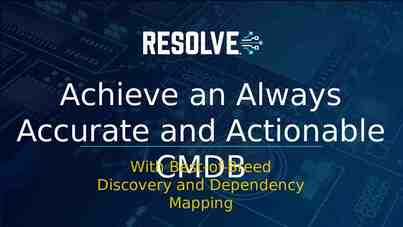Chapter Five Planning the Sales Call: Steps to a Successful
58 Slides3.97 MB

Chapter Five Planning the Sales Call: Steps to a Successful Approach PowerPoint presentation prepared by Dr. Rajiv Mehta

Chapter Outline Importance of planning the sales call Planning for the sales call: seven steps to preapproach success Initial sales call reluctance -- sales “stage fright” Interaction with the receptionist Approaching the prospect Greeting the prospect Improving one’s self-image Copyright Houghton Mifflin Company. All rights reserved. Chapter 5 Slide 2

Learning Objectives After reading this chapter, you should understand: Why it’s important to plan and prepare for the sales call. How to plan the sales call. How to prepare prospects for the initial sales call. The causes of sales call reluctance. Which strategies to use in approaching the prospect. Necessary steps in greeting the prospect. How to interact with the prospect’s receptionist. Royalty-Free/CORBIS Copyright Houghton Mifflin Company. All rights reserved. Chapter 5 Slide 3

Figure 5.1: The Personal Selling Process (PSP) Planning the sales call is the second and third step in the 7stage professional personal selling cycle Copyright Houghton Mifflin Company. All rights reserved. Chapter 5 Slide 4

Importance of Planning the Sales Call “Failing to plan is planning to fail” Top professional sales representatives thoroughly plan all their sales calls to ensure success by: a) b) c) d) e) f) Establishing sales call objectives Improving effectiveness and efficiency Preparing for customer reaction Enhancing self-confidence and professionalism Determining which selling strategies to use Avoiding errors Chapter Review Question: Give some basic reasons for planning sales calls. Royalty-Free/CORBIS Copyright Houghton Mifflin Company. All rights reserved. Chapter 5 Slide 5

A. Establishing Sales Call Objectives When establishing objectives for a sales call, set: Primary Primary objectives objectives (targeted (targeted outcome) outcome) Minimum Minimum objectives objectives (lowest (lowest acceptable acceptable outcome) outcome) Royalty-Free, Digital Vision/Getty Images Optimal Optimal objectives objectives (best (best possible possible outcome) outcome) Chapter Review Question: With respect to sales call objectives, explain the difference between a primary, a minimum, and an optimal objective, and then provide examples of each. Copyright Houghton Mifflin Company. All rights reserved. Chapter 5 Slide 6

A. Establishing Sales Call Objectives Use “S M A R T” steps to set sales objectives: Specific: Establish a specific, major objective for the sales call. Measurable: Ensure that your major objective is measurable or quantifiable, e.g., a certain number of units or dollar sales volume. Achievable: Make sure the goals you set are realistic and achievable. Relational: Always try to develop a long-term relationship with the prospect even if the major objective on this sales call is not achieved. Temporal: If you can, establish with the prospect a specific timeframe for achieving the major objective. Chapter Review Question: What do the letters in SMART stand for? How can SMART help a salesperson set sales call objectives? Copyright Houghton Mifflin Company. All rights reserved. Chapter 5 Slide 7

A. Establishing Sales Call Objectives Ultimately, most sales calls should achieve one or more of three overall objectives: 1. Generate sales: Sell particular products to target customers on designated sales calls 2. Develop the market: Lay the groundwork for generating new business by educating customers and gaining visibility with prospective buyers 3. Protect the market: Learn competitors’ strategies and tactics and protect relationships with current customers. Chapter Review Question: Identify and explain different reasons for establishing sales call objectives. Copyright Houghton Mifflin Company. All rights reserved. Chapter 5 Slide 8

B. Improving Effectiveness and Efficiency Effectiveness: Results-orientation by focusing on achieving selling goals Royalty-Free/CORBIS Efficiency: Cost-orientation by making the best possible use of the salesperson’s time and efforts Royalty-Free/CORBIS Copyright Houghton Mifflin Company. All rights reserved. Chapter 5 Slide 9

C. Preparing for Customer Reaction Prepare for sales calls by anticipating prospects’ possible responses to each step and statement in the selling process It’s better to respond to the prospect’s question with “I don’t know” than to make up an answer But it’s far better for establishing your credibility as a professional to have the necessary information before you see the prospect Royalty-Free/CORBIS Copyright Houghton Mifflin Company. All rights reserved. Chapter 5 Slide 10

D. Enhancing Self-Confidence and Professionalism Royalty-Free, Digital Vision/Getty Images You will significantly add to your perceived professionalism when prospects see that you have an organized, confident sales presentation that demonstrates in-depth understanding of their needs and perspectives When prospects sense your confidence and professionalism, their own confidence in your knowledge is enhanced, and they typically become more receptive to sales negotiations Copyright Houghton Mifflin Company. All rights reserved. Royalty-Free, Digital Vision/Getty Images Chapter 5 Slide 11

E. Determining Which Selling Strategies to Use The objective of the sales call could be to: Introduce yourself Gather more information about the prospect’s needs Develop a closer relationship Win a large order Royalty-Free, Digital Vision/Getty Images Each objective requires the selection of an appropriate sales presentation strategy. Copyright Houghton Mifflin Company. All rights reserved. Chapter 5 Slide 12

F. Avoiding Errors Gathering prospect information ahead of the sales call helps salespeople reduce their chances of making serious errors in front of the prospect. Copyright Houghton Mifflin Company. All rights reserved. Chapter 5 Slide 13

Planning for the Sales Call: Seven Steps to Preapproach Success Sales call planning increases in importance when: The customer's decision is a complex, highinvolvement, high risk one Future interactions and negotiations with the customer are expected The customer's needs are unique A range of alternatives is available to the customer The sale is very critical to the salesperson Royalty-Free, Digital Vision/Getty Images Ensure success plan for the sales call by using seven steps Copyright Houghton Mifflin Company. All rights reserved. Chapter 5 Slide 14

Planning for the Sales Call: Seven Steps to Preapproach Success cont’d 1. Prepare the prospect for the initial sales call 2. Sell the sales call appointment by prenotification 3. Gather and analyze all relevant information about the prospect 4. Identify the prospect’s problems and needs 5. Identify the product features, advantages, and benefits 6. Choose the best sales presentation strategy 7. Plan and rehearse your approach Chapter Review Question: What are the steps to preapproach success? Copyright Houghton Mifflin Company. All rights reserved. Chapter 5 Slide 15

Table 5.1 Seven Steps in Preapproach Planning Copyright Houghton Mifflin Company. All rights reserved. Chapter 5 Slide 16

Planning for the Sales Call: Seven Steps to Preapproach Success cont’d 1. Prepare the prospect for the initial sales call Prepare prospect for the sales call using 4 "Seeding" steps: a) b) c) d) Identify industries or customer categories that offer high sales potential and make a file folder for each Learn as much as possible about the most important concerns of these industries, such as needs in the areas of new-product development, product quality, return on investment, or raw material supplies Keep these needs in mind while browsing through newspapers, trade journals, or general business magazines, and cut out pertinent articles Select specific companies with high sales potential from each of the industries and find out the names of one or more key people in the buying center at each company Chapter Review Question: Define seeding and briefly explain how this technique can be used. Copyright Houghton Mifflin Company. All rights reserved. Chapter 5 Slide 17

Planning for the Sales Call: Seven Steps to Preapproach Success 2. Sell the sales call Sell the sales call appointment by prenotification using: Cold call E-mail Fax Mail Telephone Royalty-Free, Digital Vision/Getty Images Royalty-Free, Digital Vision/Getty Images Chapter Review Question: Describe the prenotification phone call approach to obtaining the initial sales appointment. Copyright Houghton Mifflin Company. All rights reserved. Chapter 5 Slide 18

Table 5.2 Prenotification by Telephone to Obtain a Sales Call Appointment Copyright Houghton Mifflin Company. All rights reserved. Chapter 5 Slide 19

Table 5.2 cont’d Copyright Houghton Mifflin Company. All rights reserved. Chapter 5 Slide 20

Table 5.2 cont’d Copyright Houghton Mifflin Company. All rights reserved. Chapter 5 Slide 21

Planning for the Sales Call: Seven Steps to Preapproach Success cont’d 3. Gather and Analyze Information Gather information on prospects such as: Royalty-Free/CORBIS – – – – – – – – – – – – – Copyright Houghton Mifflin Company. All rights reserved. The prospect’s name and its pronunciation Nickname if preferred Job title Duties Superior Education Work experience Level of technical expertise Purchasing authority Buying behavior Personality Prospect’s family After-work activities, hobbies, and interests Chapter 5 Slide 22

Planning for the Sales Call: Seven Steps to Preapproach Success cont’d 3. Gather and Analyze Information (continued) Gather information on prospects from: Departments in the salesperson’s company— marketing, accounting, credit, purchasing, and data processing Federal, state, and local government reports Trade association newsletters Brochures, and literature from trade shows and exhibits Trade journals Copyright Houghton Mifflin Company. All rights reserved. Online and off-line directories, indexes, and bibliographies Mailing lists bought from commercial companies The prospect and the prospect’s business (through observation) Current customers of the seller Consumer credit bureaus In-house purchasing agents Electronic directories and databases Chapter 5 Slide 23

Organizational Customer /Prospect Profile: Summary Information Copyright Houghton Mifflin Company. All rights reserved. Chapter 5 Slide 24

Selective Electronic Directories and Databases Copyright Houghton Mifflin Company. All rights reserved. Chapter 5 Slide 25

Planning for the Sales Call: Seven Steps to Preapproach Success cont’d 4. Identify the prospect’s problems and needs Identify organizational problems and needs using S P I N approach: Situation: First, the salesperson tries to learn about the prospect’s situation. Problem: Second, the salesperson identifies a problem that the prospect regularly encounters with products presently in use. Implication: Third, the salesperson learns the implications, or results, of the problem. Needs Payoff: Finally, the salesperson proposes a solution to the problem and asks for some kind of commitment from the prospect. Chapter Review Question: What do the letters in SPIN stand for? Give an example of the SPIN approach. Copyright Houghton Mifflin Company. All rights reserved. Chapter 5 Slide 26

Planning for the Sales Call: Seven Steps to Preapproach Success cont’d 5. Identify the product features, advantages, and benefits Identify the features of the products being considered for this sale. Royalty-Free/CORBIS Enumerate the advantages of your products relative to competitors’ products. Determine as exhaustively as possible the observable value and benefits of each product that will be sold to the customer’s firm. Royalty-Free/CORBIS Copyright Houghton Mifflin Company. All rights reserved. Chapter 5 Slide 27

Planning for the Sales Call: Seven Steps to Preapproach Success cont’d 6. Choose the best sales presentation strategy Truly customer-oriented salespeople identify and solve customer problems by skillfully observing, listening, and asking probing questions. Most successful salespeople learn how to “flex” (adapt) their communication styles in accordance with their prospects’ communication styles. Royalty-Free, Digital Vision/Getty Images Copyright Houghton Mifflin Company. All rights reserved. Chapter 5 Slide 28

Planning for the Sales Call: Seven Steps to Preapproach Success cont’d 7. Plan and rehearse your approach Rehearse, rehearse, rehearse until you have mastered your total sales presentation and feel comfortable and confident about it. Do not memorize a canned spiel, but keep in mind the key points you want to make in each of the stages of the selling process. Carefully planning, preparing, and rehearsing each sales call will spell success. Copyright Houghton Mifflin Company. All rights reserved. Chapter 5 Slide 29

Initial Sales Call Reluctance: Sales Stage Fright One of the biggest problems new salespeople face is fear of making the initial contact with prospects Kinds of Sales Call Fright Social or self-image threat Intrusion sensitivity Analysis paralysis Group fright Social class or celebrity intimidation Role ambivalence Exploitation guilt Royalty-Free/CORBIS Copyright Houghton Mifflin Company. All rights reserved. Chapter 5 Slide 30

Table 5.5 Kinds of Sales Call Reluctance Copyright Houghton Mifflin Company. All rights reserved. Chapter 5 Slide 31

Initial Sales Call Reluctance cont’d Sales Call Anxiety (SCA) SCA can be attributed the fear of being negatively evaluated and rejected by customers The 4 facets of SCA include: 1. negative evaluation of the self 2. imagined negative evaluations from customers 3. one’s physiological symptoms 4. protective actions Copyright Houghton Mifflin Company. All rights reserved. Chapter 5 Slide 32

Initial Sales Call Reluctance cont’d Overcoming Sales Call Reluctance Many of the barriers to making sales calls can be overcome through the following efforts Listen carefully to the excuses other salespeople use to justify call reluctance and learn to objectively analyze your own excuses Use supportive role-playing and discussions with sales colleagues to overcome fear Royalty-Free, Digital Vision/Getty Images Make some initial prospect contacts with a partner for support; then make calls without partner support Copyright Houghton Mifflin Company. All rights reserved. Chapter 5 Slide 33

Initial Sales Call Reluctance cont’d Overcoming Sales Call Reluctance Review and re-enact recent sales calls with sales colleagues to constructively critique performance for signs of progress Shift the focus from individual prospect personalities to sales objectives by setting them down in writing prior to making a sales call Royalty-Free, Digital Vision/Getty Images Observe and model the behavior of successful salespeople Rehearse sales calls with sales colleagues to reinforce positive behaviors Chapter Review Question: List several kinds of sales call stage fright. What would you do to overcome these fears? Copyright Houghton Mifflin Company. All rights reserved. Chapter 5 Slide 34

Interaction with the Receptionist What determines whether salespeople receive the receptionist’s assistance is dependent on the behavior they exhibit with that person. A common complaint of many buyers is that salespeople are oftentimes rude, particularly to receptionists. So, professional deportment with the receptionist is critical. Royalty-Free, Digital Vision/Getty Images Copyright Houghton Mifflin Company. All rights reserved. Chapter 5 Slide 35

Approaching the Prospect 1. Non-Product-Related Approaches Self-introduction Self-introduction Free Free gift gift or or sample sample Mutual Mutual acquaintance acquaintance or or reference reference Dramatic Dramatic act act Copyright Houghton Mifflin Company. All rights reserved. Chapter 5 Slide 36

Approaching the Prospect 2. Peaking Interest Approaches Customer-benefit Customer-benefit approach approach Copyright Houghton Mifflin Company. All rights reserved. Curiosity Curiosity Chapter 5 Slide 37

Approaching the Prospect 3. Consumer-Directed Approaches Compliment Compliment or or praise praise Question Question Survey Survey Copyright Houghton Mifflin Company. All rights reserved. Chapter 5 Slide 38

Approaching the Prospect 4. Product-Related Approaches Product Product or or ingredient ingredient Product Product demonstration demonstration Chapter Review Question: Name as many different approach strategies as you can, and briefly give a sales example of each. Copyright Houghton Mifflin Company. All rights reserved. Chapter 5 Slide 39

Table 5.6 Strategies for Approaching Prospects Copyright Houghton Mifflin Company. All rights reserved. Chapter 5 Slide 40

Table 5.6 cont’d Copyright Houghton Mifflin Company. All rights reserved. Chapter 5 Slide 41

Greeting the Prospect A. Mood You can learn to be optimistic (to overcome adversity and develop a positive mood state) This involves three steps: 1. Identify self-defeating beliefs and the events that trigger those beliefs. 2. Gather evidence to assess the accuracy of your self-defeating beliefs. 3. Replace the negativity (self-defeating beliefs) with constructive and accurate beliefs. Royalty-Free, Digital Vision/Getty Images Copyright Houghton Mifflin Company. All rights reserved. Chapter 5 Slide 42

Greeting the Prospect B. Facial Expression Warmly smiling with mouth and eyes. C. Body Posture Royalty-Free, Digital Vision/Getty Images Copyright Houghton Mifflin Company. All rights reserved. Maintain a comfortable, erect posture in greeting prospects in order to project a positive attitude. Chapter 5 Slide 43

Greeting the Prospect D. Shaking Hands Types of handshakes include: Seal-the-deal The fish Three-fingered claw Bone crusher The pumper Death grip Dish rag Copyright Houghton Mifflin Company. All rights reserved. Chapter 5 Slide 44

Appropriate and Inappropriate Handshakes Copyright Houghton Mifflin Company. All rights reserved. Chapter 5 Slide 45

Improving One’s Self-image Because failure is so prominent in selling, salespeople may need to reprogram themselves so that they can focus on their successes rather than on their failures. Improve your self image by thinking positively while maintaining a high level of personal self esteem and enthusiasm. Royalty-Free, Digital Vision/Getty Images Chapter Review Question: How might a salesperson overcome a poor self-image? Copyright Houghton Mifflin Company. All rights reserved. Chapter 5 Slide 46

Key Terms Preapproach The approach planning stage of the selling process. Approach The first face-to-face contact with the prospect. SMART A method of setting sales call objectives that are specific, measurable, achievable, relational, and temporal. Seeding Prospect-focused activities, such as mailing pertinent news articles, carried out several weeks or months before a sales call. Prenotification The use of an in-person cold call, a mailing, or a telephone call to send a strong signal to the prospect that the salesperson would like to schedule a sales call appointment. Copyright Houghton Mifflin Company. All rights reserved. Chapter 5 Slide 47

Key Terms cont’d Cold Call Initial face-to-face contact with a prospect who is not expecting the salesperson to call. SPIN A selling technique that enables the salesperson to identify a prospect’s major needs quickly. The acronym stands for Situation, Problem, Implications, and Needs payoff. Customer-Benefit Approach An approach whereby the salesperson offers the prospect a specific benefit that can be realized from using the salesperson’s product. Survey Approach An approach whereby the salesperson asks the prospect to answer a few survey questions, the responses to which establish quickly whether the prospect has a need for the salesperson’s product. Copyright Houghton Mifflin Company. All rights reserved. Chapter 5 Slide 48

Topics for Thought and Class Discussion 1. What strategy would you use to arrange a sales appointment for each of the following situations: Selling a corporate jet to a CEO of a large company Selling lighting fixtures to the chief administrator of a large city hospital Selling the arrangements committee of the American Marketing Association on choosing your resort hotel for the AMA’s annual summer educators’ conference three years from now Copyright Houghton Mifflin Company. All rights reserved. Chapter 5 Slide 49

Topics for Thought and Class Discussion cont’d 2. You have a salesperson friend who fears calling prospects on the phone to arrange sales appointments. You’d like to help him or her overcome this fear. What’s your advice? 3. You’ve tried many different approaches with an organizational prospect who seems nice enough but just isn’t impressed with you. Finally, you decide to risk a dramatic approach. Describe some dramatic acts you might use. What risks accompany this approach? Copyright Houghton Mifflin Company. All rights reserved. Chapter 5 Slide 50

Internet Exercises 1. You have been appointed to work as a U.S. sales representative for Airbus Industrie, which has just developed the Airbus 380, a start-ofthe-art double-decker aircraft that carries between 550 and 900 passengers. Conduct a Web-based search for detailed information about the airline industry. More specifically, to help you plan the sales call and make your approach successful, find the following information: The addresses and locations of the headquarters of the major players in the airline industry (passenger airlines and cargo carriers) The sales, market share, profits, and size of each of the major competitors The regions of the United States and of the world where they operate What type of aircraft they currently use The names, addresses, e-mail addresses, and telephone numbers, purchasing managers for all of the airlines and cargo carriers Copyright Houghton Mifflin Company. All rights reserved. Chapter 5 Slide 51

Internet Exercises cont’d 2. As a freshly recruited salesperson for a dental supply company that has developed a revolutionary, less expensive compound for filling dental cavities, you need to quickly find detailed information about dentists in your county whom you can contact—information that will help you plan a successful sales call and approach. Conduct a Webbased search for the following information on dentists in your county: Names, addresses, e-mail addresses, and telephone numbers of dentists in private practice Names, addresses, e-mail addresses, and telephone numbers of dentists in large dental clinics Owner names, addresses, e-mail addresses, and telephone numbers of dental supply stores Copyright Houghton Mifflin Company. All rights reserved. Chapter 5 Slide 52

Internet Exercises cont’d 3. In your job as a sales rep for a health maintenance organization (HMO), you need to contact small, medium-sized, and large organizations to sell a better employee health insurance plan. Use the Internet websites identified in Table 5.4 or any others to conduct a search for the following information, which will help you plan your sales call to organizations in your county: Addresses and locations of small, medium-sized, and large organizations Sales, market share, profits, and size of each of the firms Names, addresses, e-mail addresses, telephone numbers of human resource department managers that make decisions on employee health insurance plans Copyright Houghton Mifflin Company. All rights reserved. Chapter 5 Slide 53

Projects for Personal Growth 1. Choose two companies in your hometown, one large and one small, and plan an approach (preapproach) strategy for each of them. 2. Assume a selling scenario in which you are the salesperson. Then develop the best approach strategy you can for a designated prospect, using the seven steps to preapproach success. Copyright Houghton Mifflin Company. All rights reserved. Chapter 5 Slide 54

Projects for Personal Growth cont’d 3. Using the mutual acquaintance or reference approach and the customer-benefit approach strategies, role-play how you would execute each one in these two situations: (a) You are a textbook salesperson for a large publisher calling on the chair of the marketing department at a state university. (b) You are a salesperson for a security guard company calling on a large retail store manager. 4. With a classmate, demonstrate each of the types of handshakes listed here. Describe your feelings as you perform each handshake. (a) Seal-the-Deal, (b) Fish, (c) Three-Fingered Claw, (d) Bone Crusher, (e) Pumper, (f) Death Grip, and (g) Dish Rag. Copyright Houghton Mifflin Company. All rights reserved. Chapter 5 Slide 55

Projects for Personal Growth cont’d 5. Develop an organizational prospect profile on your favorite company. You might start by going online using a basic search engine such as Google and then requesting an annual report or other descriptive materials from the company. Use sources at your school library such as Standard and Poor’s, Dun & Bradstreet, or Value Line to learn more about the company and its financial situation. Note: You might want to practice cold calling by contacting representatives within the company itself, but be sure to indicate that you are a student working on a project before requesting pamphlets and other materials or information. Otherwise, you may be assumed to be snooping on behalf of a competitor and may hear a quick “hang-up”! Copyright Houghton Mifflin Company. All rights reserved. Chapter 5 Slide 56

Case 5.1: The Really Cold Initial Sales Call 1. What do you think are John’s major problems as a salesperson? 2. Outline a strategy for John to follow in making initial sales call appointments so that he won’t be turned away so often. 3. What first-meeting approach might John use to win over “gatekeepers” such as receptionists and administrative secretaries? 4. What kind of training program do you think EBCC has for new salespeople? What would you suggest that the program include? Copyright Houghton Mifflin Company. All rights reserved. Chapter 5 Slide 57

Case 5.2: Approaching Prospects To Sell a “Gotta Have It” Product 1. What do you think of Jodi Miller’s general approach to selling the new line of area rugs? What could she do differently to obtain appointments with buyers? 2. Critique Jodi’s performance in trying to sell the area rugs to Thrush’s. What positive moves did she make? What mistakes did she make? How would you have handled this account? 3. What might Jodi do now to sell the area rugs to Thrush’s? 4. What strategies would you advise Jodi to use in (a) scheduling appointments with retail buyers, (b) preparing for the sales call, and (c) approaching prospects for the first time? Case 5.2 is found online at http://college.hmco.com/pic/andersonps2e. Copyright Houghton Mifflin Company. All rights reserved. Chapter 5 Slide 58






